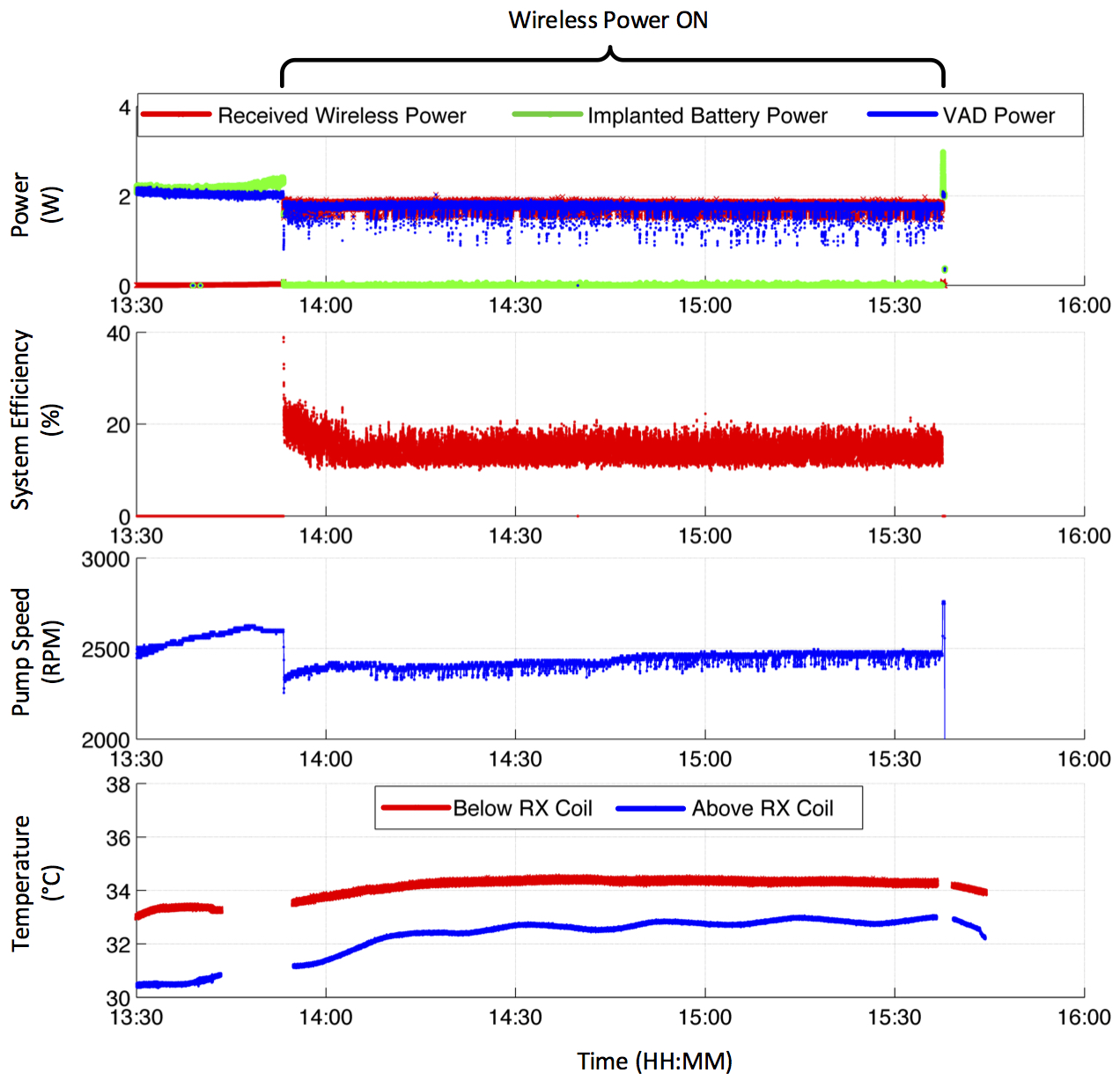P. Bonde1,2, J. Smith1 1University Of Washington,Department Of Electrical Engineering,Washington, WA, USA 2Yale University,Cardiac Surgery,New Haven, CT, USA
Introduction:
Models of power delivery within an intact organism have been limited to destructive ionizing radiation and to some extent sound & magnetic waves for diagnostic purposes. Traditional electrical power delivery within intact human body relies on implanted batteries that limit the amount and duration of delivered power. The efficiency of current battery technology limits substantial demand to be met such as continuous operation of an implantable artificial heart pump, artificial kidney or artificial liver. We have developed a Free Range Electrical Energy Delivery (FREE-D) for remote electrical power delivery to an intact biological system using magnetic resonant coupling technology up to a meter distance wirelessly. FREE-D system can allow continuous operation of artificial organs, which consume large amount of energy without being dependent on implanted batteries alone.
Methods:
The FREE-D system consists of two resonators efficiently exchanging energy by sharing magnetic fields that oscillate at a specific resonant frequency separated by an intervening distance. A power amplifier delivers an AC signal to the transmit resonator consisting of a single-turn drive loop and a multi-turn coil. Current flowing through the transmit coil induces a magnetic field that is emitted in all directions. When a second resonator consisting of a multi-turn coil and a single-turn receive loop is brought within range of the first, the magnetic field induces electrical current in the receive coil. Additional rectification circuitry connected to the receive loop converts the AC signal into a DC voltage compatible with the artificial heart pump system controller. Magnetic fields emitted by the FREE-D resonators can permeate through solid objects such as walls, household furniture, and human tissues, and can pass around highly conductive objects such as metallic furnishings and other electronic devices. Auto-tuning makes it possible for efficient wireless power transfer to occur through all of these interfering mediums.
Results:
Artifical heart pumps were operated continuously for over 90 days in vitro without interruptions at constant speed. The system didnot have a single interruption or electrical delay or fault detected. The system was then tested in vivo in swine (n=4) to test for efficiency and any temperature changes (Fig 1); the operating temperature invivo of the receive coil remained below 35 degrees celsius for the duration of the experiemnts. Histological analysis near the implanted coil didnot show any thermal induced cell damage.
Conclusion:
Remote electrical power delivery is achieved with high reliability without any tissue damage. This technology has the potential to revolutionize and achieve total implantability for artifical human organs.
